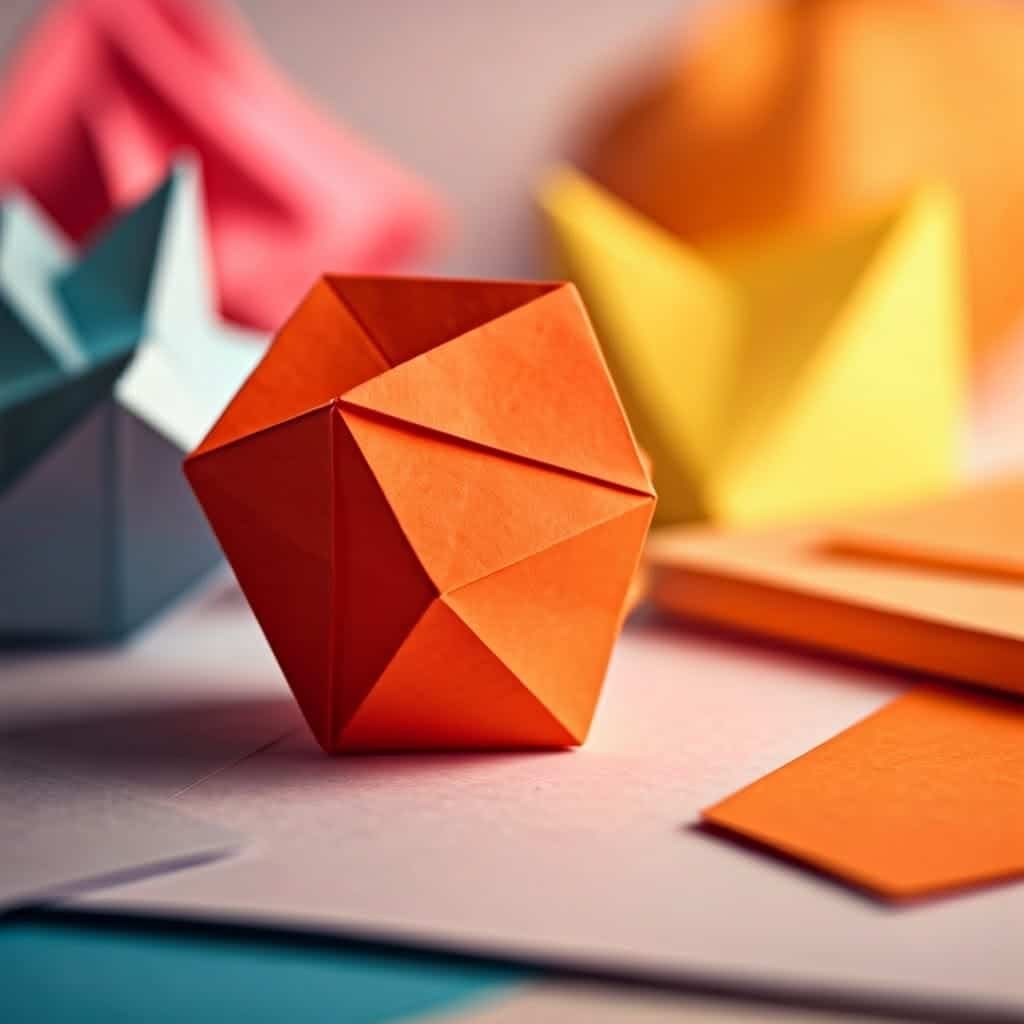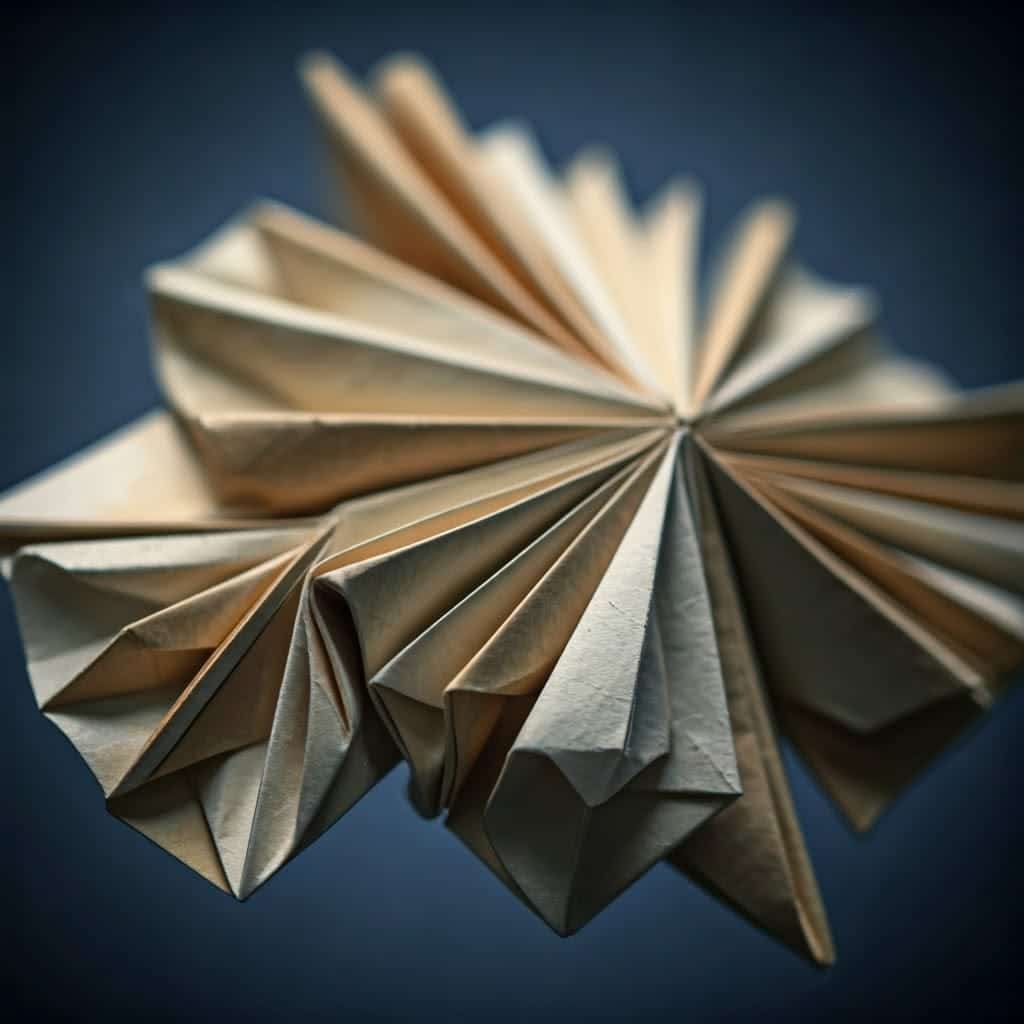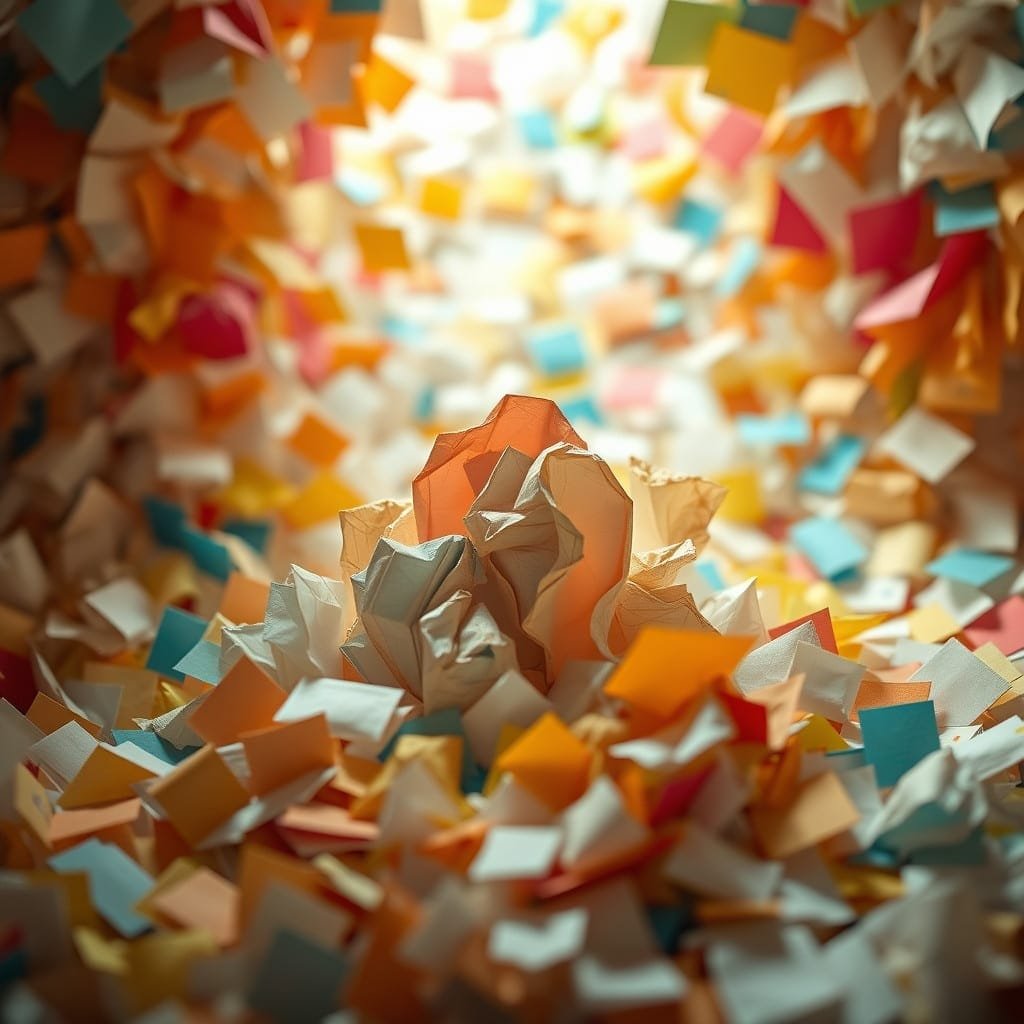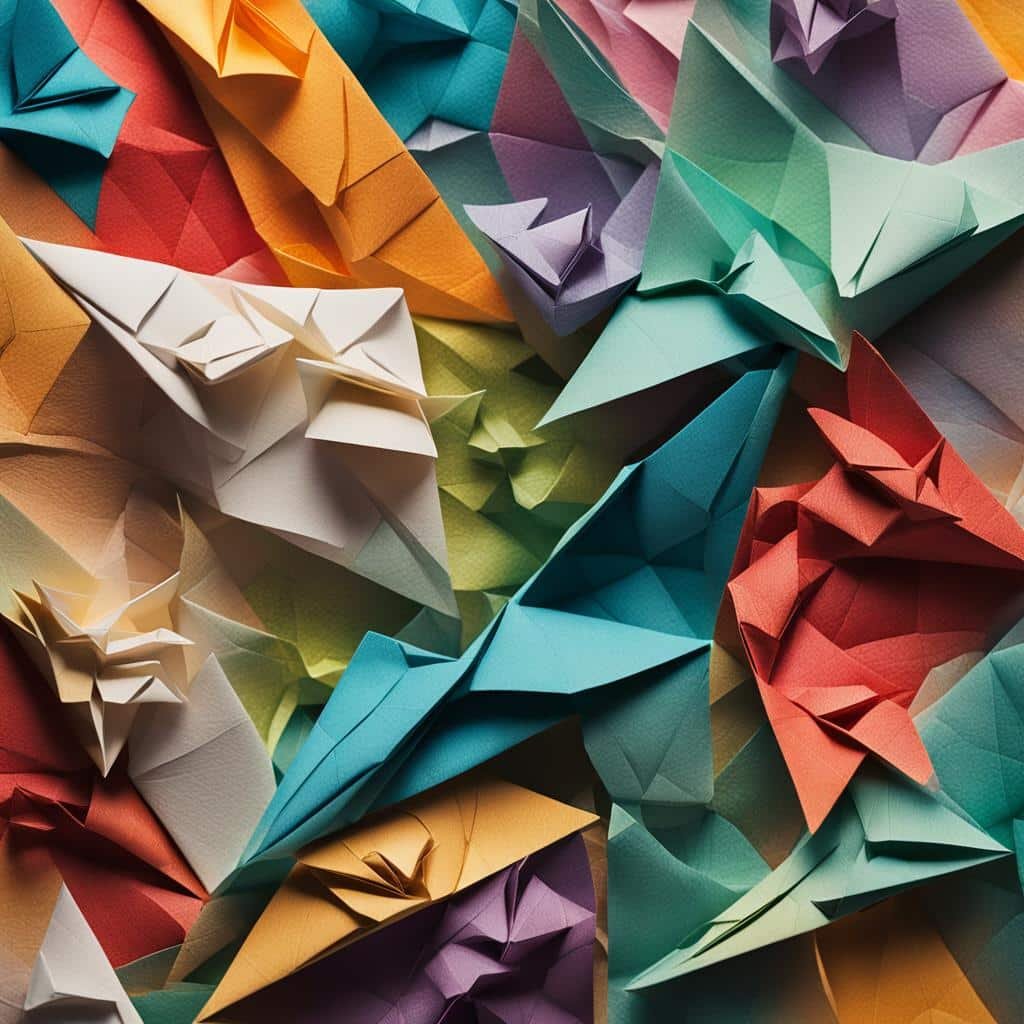Your cart is currently empty!
Stay in Touch!
Get updates about new artwork and upcoming events.
Get updates about new artwork and upcoming events.
—
by
Abstract Expressionism, one of the most transformative art movements of the 20th century, redefined artistic approaches to material, process, and meaning. Emerging in post-war America, the movement’s emphasis on spontaneity, emotion, and abstraction had a profound impact on subsequent art forms, particularly mixed media. Today, the intricate world of origami adds another layer of innovation to mixed media art, integrating the conceptual depth of Abstract Expressionism with the precision and structural ingenuity of paper folding.
For art collectors and interior designers, exploring the relationship between these art forms offers not only a deeper appreciation of contemporary artworks but also insight into how artistic traditions evolve while remaining relevant in modern contexts.
Abstract Expressionism introduced methods that challenged conventional boundaries, pushing art into uncharted territory. These techniques have not only shaped mixed media art but also resonate strongly with the structural and aesthetic possibilities of origami.


The hallmark of Abstract Expressionism was its embrace of spontaneity, where the subconscious guided the creative process. Artists like Jackson Pollock allowed their emotions to dictate their work, using gestural techniques to build dynamic and expressive compositions. This approach aligns closely with origami-based mixed media art, where the folding process often evolves intuitively.
While origami requires precision, its integration into mixed media art introduces opportunities for improvisation. For instance, the interplay of folded forms with textured surfaces, layered paint, or other materials reflects a balance between control and organic evolution. This intuitive process mirrors Abstract Expressionism’s ethos, where unpredictability is not a flaw but a defining feature of artistic authenticity.
Abstract Expressionists broke free from traditional art materials, incorporating industrial elements, found objects, and unconventional media. Artists like Robert Rauschenberg and Lee Krasner expanded the definition of what could be considered art, paving the way for mixed media experimentation.
Similarly, origami has evolved from its traditional roots of folding plain paper to include painted fine art paper, custom-made materials, and even mixed media components like textiles, acrylics, and wood. When folded elements are paired with other materials in a mixed media context, they create multidimensional works that defy categorization, echoing the innovative spirit of Abstract Expressionism.
The physical engagement seen in action painting—a key subset of Abstract Expressionism—has parallels in the art of folding. Artists like Pollock made the act of painting a performance, using their entire bodies to create sweeping gestures and marks. Similarly, origami artists engage deeply with their materials, using their hands to fold, crease, and shape paper into intricate forms.
This tactile process becomes even more dynamic in mixed media contexts, where folded paper interacts with textured surfaces, painted layers, and sculptural elements. The resulting works are imbued with the physicality of their creation, a quality that resonates with both Abstract Expressionist principles and the hands-on craftsmanship of origami.
Abstract Expressionism was not only a revolution in technique but also a shift in the philosophy of art-making. Its core ideas find a compelling counterpart in the conceptual and symbolic depth of origami-based mixed media art.


Abstract Expressionism emphasized the process of making art as a central focus, often placing more importance on the journey than the final product. This philosophy is deeply mirrored in origami, where each fold is an integral step in the creation process.
When combined with mixed media, origami takes on a new dimension of complexity. The folding becomes one layer in a multi-step process that includes painting, layering, and assembling. The result is a work that celebrates its own making, inviting viewers to appreciate not just the finished piece but the artistic journey it represents.
Abstract Expressionists sought to access the unconscious mind, using abstract forms and gestures to express emotions and universal truths. Origami, with its modular and geometric nature, offers a similar avenue for introspection and storytelling.
Each fold and crease can symbolize tension, release, or transformation, creating works that are both deeply personal and universally resonant. When these folded forms are integrated into mixed media pieces, they become part of a larger narrative that explores themes of resilience, balance, and interconnectedness—concepts central to both Abstract Expressionism and origami.
The rejection of representational art by Abstract Expressionists paved the way for conceptual storytelling through abstract forms, textures, and colors. Origami builds on this foundation by introducing three-dimensional structures that convey meaning through their interplay of light, shadow, and spatial relationships.
In a mixed media context, folded elements add layers of meaning and visual interest. A single origami fold can represent a moment of transformation, while its repetition across a piece creates a rhythm that draws viewers into the work’s narrative.
The principles of Abstract Expressionism are evident in today’s mixed media practices, particularly when paired with the structural innovation of origami. The result is art that is as visually compelling as it is conceptually rich, appealing to both collectors and designers.
Mixed media artists often build complex textures by combining paint, textiles, and found objects. Origami adds another layer of dimensionality, transforming flat surfaces into sculptural compositions.
For instance, a mixed media piece might feature folded paper forms emerging from a painted wood panel, their shadows creating dynamic contrasts that change with the viewer’s perspective. These qualities make origami-based mixed media art particularly appealing in interior design, where its depth and dimensionality can transform a space.
Abstract Expressionism’s emphasis on emotion finds a natural partner in origami, where each fold reflects a balance between control and release. When integrated into mixed media works, these folds become visual metaphors for human experiences such as tension, resilience, and growth.
For art collectors, these pieces offer a unique combination of technical mastery and emotional depth, making them powerful additions to personal or professional collections.
Abstract Expressionism encouraged artists to experiment boldly, an ethos that continues to inspire contemporary origami-based mixed media art. Artists are pushing boundaries by combining paper folding with unconventional materials like resin, metal, and digital elements.
This spirit of experimentation results in cutting-edge works that challenge traditional notions of both origami and mixed media, appealing to collectors and designers seeking bold, innovative art for modern spaces.
Origami-based mixed media art is not only a fine art form but also a versatile design element that can elevate interiors.
The three-dimensional nature of origami-based mixed media makes it ideal for creating focal points in a room. A large-scale piece can serve as a statement artwork, drawing attention with its intricate folds, layered textures, and interplay of light and shadow.
Smaller pieces can complement other design elements, adding subtle texture and movement without overwhelming the space. The versatility of origami allows it to integrate seamlessly into a variety of styles, from minimalist to eclectic.
Many origami-based mixed media artists offer custom commissions, allowing designers to tailor works to specific spaces and themes. By selecting materials, colors, and forms that align with the overall aesthetic, these pieces become an integral part of the design narrative.
The integration of Abstract Expressionist principles with the structural innovation of origami offers collectors and designers a unique opportunity to engage with art that bridges tradition and modernity.
For collectors, owning such works means acquiring pieces that are not only visually stunning but also conceptually layered, connecting past artistic movements with contemporary practices. These artworks invite introspection, offering viewers a chance to reflect on themes of resilience, transformation, and the interplay between chaos and control.
For interior designers, origami-based mixed media art provides a versatile tool for elevating spaces. Whether as bold statement pieces or subtle complementary elements, these works bring depth, texture, and emotional resonance to interiors, transforming them into environments that inspire and delight.
As art continues to evolve, the fusion of Abstract Expressionist principles with origami and mixed media will undoubtedly push boundaries further. New materials, technologies, and interdisciplinary approaches will expand the possibilities of what these art forms can achieve, ensuring their continued relevance and impact.
By embracing the revolutionary techniques and philosophies of Abstract Expressionism and combining them with the precision and storytelling potential of origami, contemporary artists are crafting works that honor tradition while breaking new ground. These pieces not only challenge viewers to see art in new ways but also invite them to connect deeply with the stories and processes behind each creation.
For art collectors and interior designers alike, this intersection represents an exciting frontier—a space where history and innovation collide to create art that is as timeless as it is transformative.